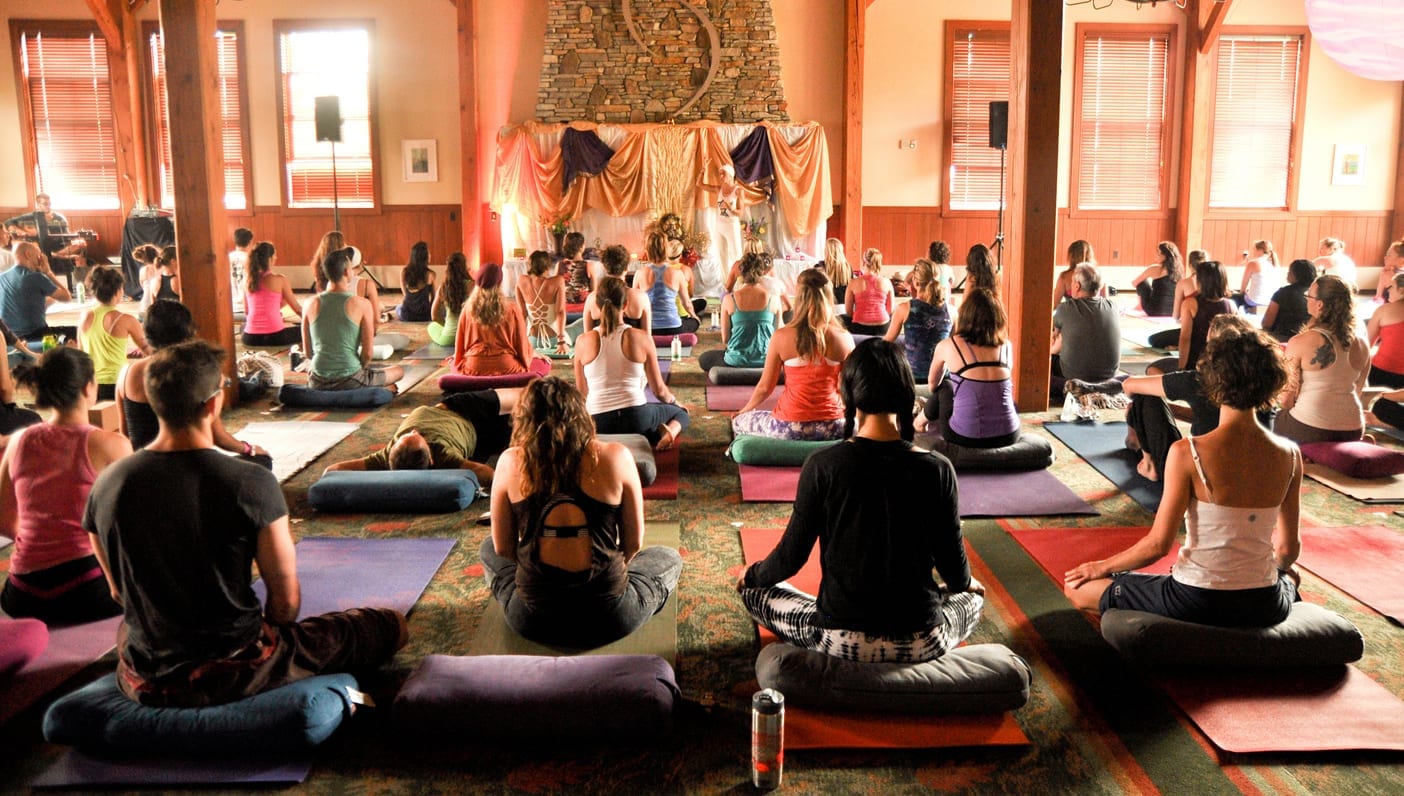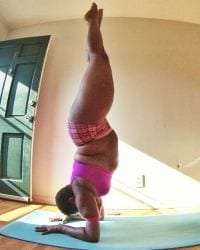
Yoga class can often feel like it’s tailored for one specific body type. I wish I could easily insert a story about a time when an instructor helped me adjust or modify my “atypical” body in class… But unfortunately, I can’t. Most yoga teachers are fairly clueless about how to make their classes more accessible and inclusive for a diverse array of body types.
All teachers have a different perspective on how to make yoga classes more accessible and inclusive. I think what it really comes down to is considering what should be added to yoga teacher trainings (YTT) in order to make classes accessible to yoga practitioners of all sizes. Most teachers receive only a cursory introduction to the experience of teaching non-traditional yoga bodies. Without having been taught how to do so, these teachers are tasked with finding and teaching pose modifications for a wide variety of yoga bodies on their own. In addition, with the exception of yoga lineages like Iyengar, many teachers seem to have a low opinion of yoga prop usage and modification.
But I have to confess: I don’t think increased education of yoga pose modification—or the use of props—is the ultimate solution. I think there’s a bigger problem here, and it’s embedded in the way yoga teachers (and by extension, all of us) are taught to regard their students. Are these ‘atypical’ yoga bodies really so different? Before we alter the way asana is taught, we need to take a hard look at the way we regard each other’s bodies.
Instead of believing their heftier students are capably unequal to their thinner comrades, teachers need to be encouraged to see all their students as able bodied and capable. In many cases, this is a fundamental shift in thought for yoga teachers—we are oftentimes taught to regard non-thin students as a different class altogether. “Because she’s bigger,” the thought goes, “You can forget about her nailing bakasana.” Rather than thinking of different body types as ones that need modification, teachers should be taught how to help all students get to the pose. Once we release ourselves from a thought-process that marginalizes certain students, we can effectively address the micro issues of pose modification and overall accessibility.
Considering the growing number of yoga teachers being pumped out of YTTs across the globe, there should be endless opportunities for yoga students of every body type to learn asanas. In my classes, I always encourage students to grab as many props as they want, and I demonstrate common ways that props can be used to modify and support their bodies. Instead of cherry-picking students who “look” like they might need extra help, these prop suggestions are extended to all my students without judgment or shame. Instead of stigmatizing modifications, I encourage everyone to listen to their own bodies and adjust as necessary.
I frequently pull out multiple blocks, blankets, and bolsters to demonstrate fully modified asana variations as opposed to advanced variations. By showing that even instructors love to use props, students can feel comfortable establishing their personal variation on a pose, regardless of how long they’ve been practicing yoga.
By humanizing the asana experience, students are more willing to trust their own judgment and grow their practices outside of a yoga studio. The bottom line is that all teachers are responsible for advocating the importance of accessibility when it comes to yoga. If all yoga teachers adjusted their perspectives, it just may be possible yet for the spectrum of yoga practitioners to represent our global diversity.
—
 Jessamyn Stanley is a North Carolina-based yoga teacher, body-positive advocate, and writer. Her classes provide a body positive approach to yoga which celebrates students’ bodies and encourages them to ask “How Do I Feel?” rather than “How Do I Look?” when practicing. Jessamyn has been featured in a variety of print and online publications including Good Morning America, The Huffington Post, NPR, People, Good Housekeeping, Cosmopolitan, Fitness Magazine, Yoga International, among others. For more body-positive yoga tips, check out her blog and follow her on Instagram @mynameisjessamyn or on Facebook.
Jessamyn Stanley is a North Carolina-based yoga teacher, body-positive advocate, and writer. Her classes provide a body positive approach to yoga which celebrates students’ bodies and encourages them to ask “How Do I Feel?” rather than “How Do I Look?” when practicing. Jessamyn has been featured in a variety of print and online publications including Good Morning America, The Huffington Post, NPR, People, Good Housekeeping, Cosmopolitan, Fitness Magazine, Yoga International, among others. For more body-positive yoga tips, check out her blog and follow her on Instagram @mynameisjessamyn or on Facebook.